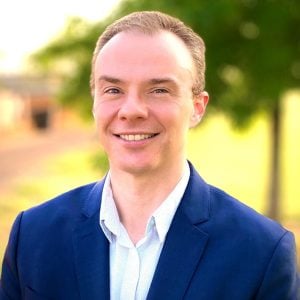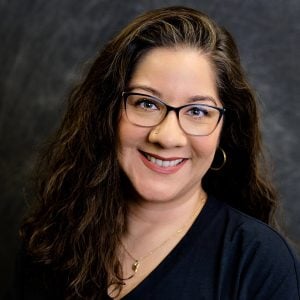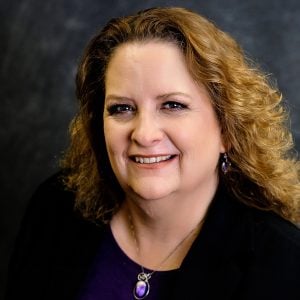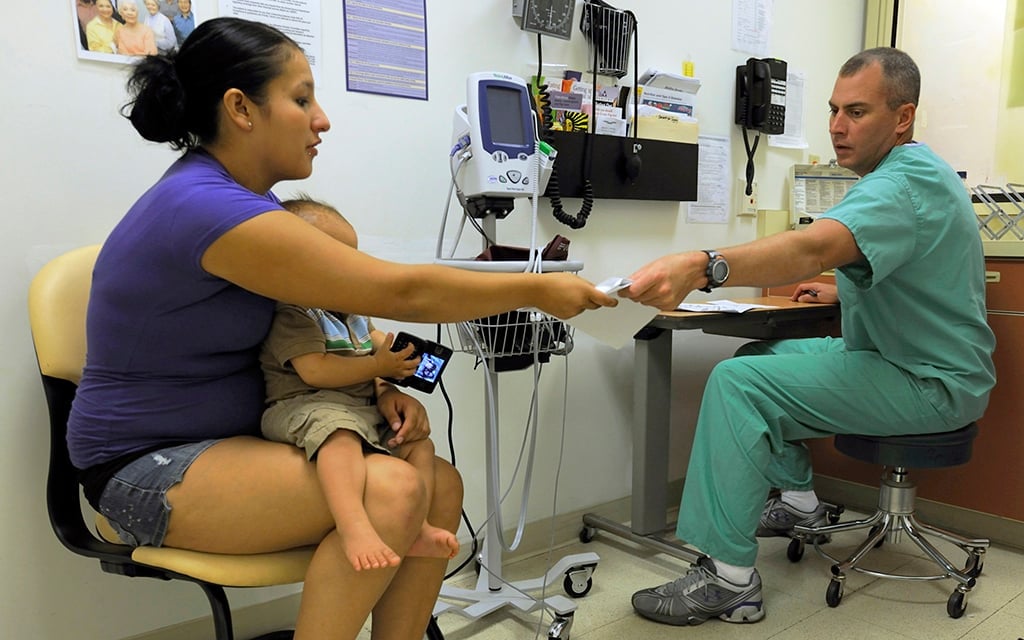After being halted across the country during the pandemic, states began reviewing the eligibility of Medicaid recipients again last year. It has led to a sharp drop in enrollment across the country, but advocates say Arizona has handled the “unwinding” well. Although enrollment is down, it is still higher than before the pandemic. (Photo by Capt. Geoff Legler/Oklahoma Army National Guard)
PHOENIX – A year after restarting the pre-pandemic review process for Medicaid and Children’s Health Insurance Program enrollment, Arizona’s health care cost containment system has cut coverage of 611,144 recipients and approved 1,953,301 renewals, according to its eligibility panel. The agency continues to review coverage for 1,892 recipients as of April 5. The nationwide review process, known as rollout, reduced Medicaid rolls in every state.
State agencies, like AHCCCS, go through a process each year known as renewal and termination. During this process, recipients’ income levels are evaluated to determine if they still qualify for coverage through Medicaid or CHIP, the Children’s Health Insurance Program. However, during the COVID-19 pandemic, the Families First Coronavirus Response Act instructed states to suspend retrenchment efforts and extend coverage until March 2023.

Matt Jewett, director of health policy at Childrens Action Alliance. (Photo courtesy of Childrens Action Alliance)
During that time, Medicaid and CHIP enrollment grew to 92.3 million nationwide, an increase of more than 20 million since the beginning of 2020. In Arizona, enrollment grew from 1.9 million to 2.5 million during the pandemic, according to Matt Jewett, director of health policy for the Children’s Action Alliance. Despite the opt-out process, more than 2.2 million Arizonans still have full or partial coverage through Medicaid or CHIP, about 300,000 more than before the pandemic, as reported in the April report by 2024 AHCCCS Population Highlights.
We are pleased that the total number of people enrolled remains above what it was before the pandemic started, Jewett said.
According to Medicaid, the expiration of continuous enrollment that occurred during the pandemic is the largest health coverage transition since the first open enrollment period for the Affordable Care Act.
AHCCCS, Arizona’s agency in charge of Medicaid, reviewed the medical criteria and ran 2.5 million Medicaid-enrolled Arizonans through the federal database and sources of income to determine eligibility. Medicaid recipients received letters explaining the start of this process and their status, regardless of whether they were declared eligible or not.
There are many people who have fallen; many of them managed to return, Jewett said. We don’t understand why some of these people lost coverage to begin with. Maybe they didn’t return the renewal forms on time, or they didn’t take action, or it could be some kind of technical or administrative error. But AHCCCS seems to be doing better than other states.

Claudia Maldonado, director of outreach and enrollment at the Arizona Alliance for Community Health Centers. (Photo courtesy of Arizona Alliance for Community Health Centers)
Those who were not automatically declared eligible or ineligible through the database were informed of their status through email and mail notifications sent by AHCCCS. He told people to review their information for possible errors and verify that they exceeded the Medicaid income limit. Heidi Capriotti, communications administrator for AHCCCS, noted that one of the main reasons for the drop-off was a lack of response from the Medicaid recipient.
For many recipients, this was their first experience with the review process, according to Claudia Maldonado, director of outreach and enrollment for the Arizona Alliance for Community Health Centers. Joint communication and outreach from state and local organizations was implemented to help guide recipients through the process.
Those who had to interact often went to a community health center maybe because they knew someone there who could help them, as all our health centers have people dedicated to helping people with their registration and questions and what have you , Maldonado said. .
Arizona’s average auto-renewal rate was 72% during the opt-out process that began in April 2023. AHCCCS obtained information through Equifax, the Department of Motor Vehicles, Medicare, Admin. from Social Security and other sources to automatically verify eligibility and avoid staff intervention.
According to the Georgetown University Center for Children and Families, Arizona has the second highest ex parte automatic renewal rate in the country. This means that many Medicaid and CHIP recipients went through the renewal process without providing documentation back and forth because AHCCCS already had the required documents.

Jennifer Burns, senior director of legislative affairs for the Arizona Alliance for Community Health Centers. (Photo courtesy of Arizona Alliance for Community Health Centers)
We are one of the highest in the country, said Jennifer Burns, senior director of legislative affairs for the Arizona Alliance for Community Health Centers. It has been very rewarding to see how well it has gone. Burns attributed Arizona’s success to collaboration between various state agencies, managed care organizations, community health centers and the community at large.
Licensed navigators received lists of those who lost coverage and were available to help them find coverage through the Affordable Care Act marketplace. Maldonado said navigators prioritized community outreach at school community resource centers, fairs and food banks where they understood the demographics of community members and their needs.
Meanwhile, community health centers worked with health plans like Medicaid to further localize outreach. Maldonado, at the AACHC, participated in media coverage of the relaxation process on news and radio in Spanish.
Each community is different and has its own personality, Maldonado said. Some of our communities prefer radio and television to social media. So it’s understanding these nuances in our communities and then choosing those avenues where we know the messages will have the greatest impact.
After rolling out Medicaid for the first time in years, state and federal agencies will soon begin the review process for next year.
#million #renewed #Medicaid #coverage #shutdown
Image Source : cronkitenews.azpbs.org
